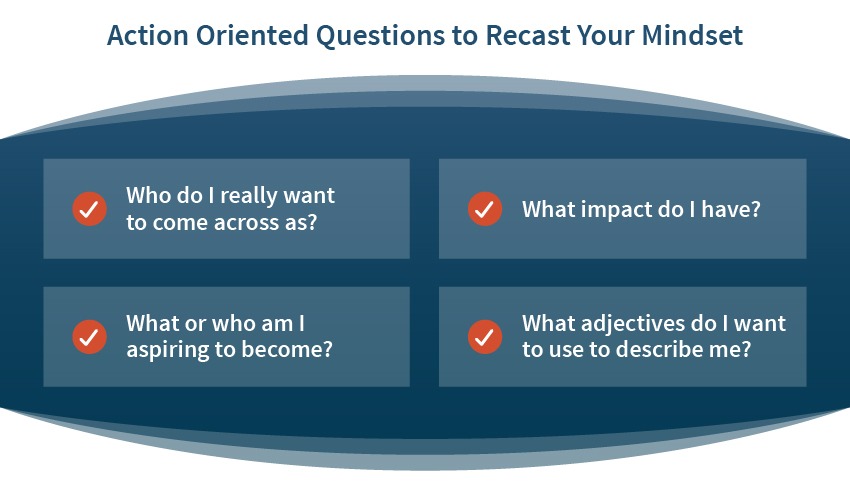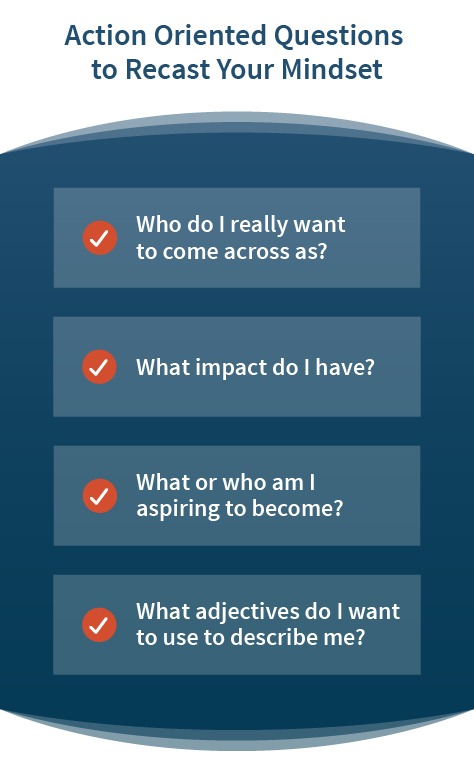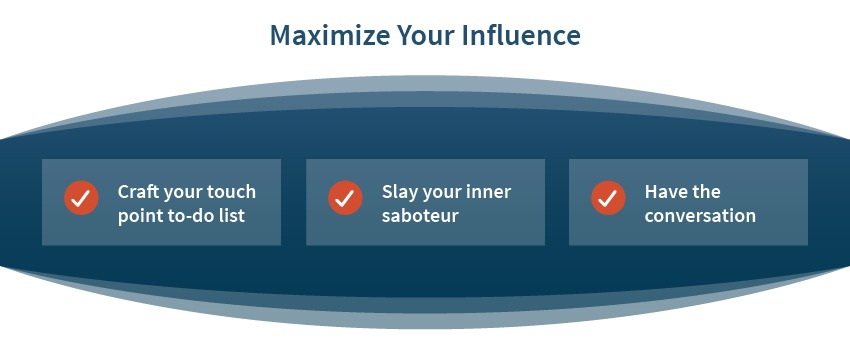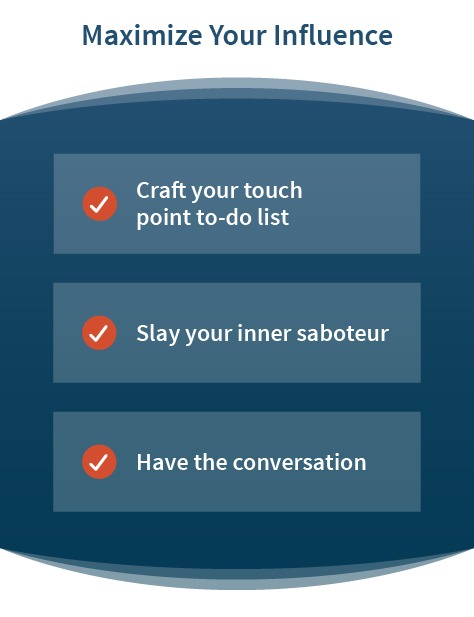What to do When You Keep Getting Sidelined by Tackling Change Solo
Out with the old and in with the new, as 2020 officially unfolds with all the promise brought forth by each new year. Many of us are ready to make some long-overdue changes in order to become better leaders, communicators, and forces to be reckoned with in our respective fields. Before we resolve to reboot certain aspects of our personal and professional lives, it helps to know what we’re up against when it comes to successfully making real change.
Whether it’s building stronger relationships, becoming a better presenter or more effective communicator, managing colleagues more successfully or realigning personal direction with true passion, most of us struggle with the solution when left to our own devices.
The trouble is, knowing you want to change and knowing how to are two different beasts. Often, despite our best intentions, we remain trapped in a tired loophole of the same behaviors and wonder why we’re still not moving the needle. Let’s quote television personality Dr. Phil for a moment, who often points out these behavioral roadblocks to change by asking, “And how’s that working for you?” It’s a rhetorical question to which everyone knows the answer is, “it’s not.” Here, we take a hard look at how to rise to the occasion and meet the challenges inherent in making meaningful and lasting change.
Make Up Your Mind
When confronted by the possibility of or desire to change, the first thing to do is see what it is that you want. Clarity is critical in order to define a goal and outline the steps to realize it. Questions you might ask yourself include:
- What is it that I really want?
- Do I really want it or only think I should?
- How important is this to me?
As an example, people often come to us and express their desire to change through statements like:
- “I want to be more even keeled as a leader and not fly off the handle.”
- “I want people to know who they’re going to get when they come in the room.”
- “I’m really working on being more level-headed or responding in a calmer way, even if I’m receiving difficult information.”
- “I want to speak up more in meetings, so my ideas are heard.”
- “I want to focus more on the strategy and not the day-to-day.”
- “I need to be more of the inspirer instead of just telling everyone what to do.”
- “I am so hard on myself; it’s exhausting and it’s holding me back.”
- “I need to learn how to say “No” so I don’t take on everything for everybody.”
For behavior change people have to gain clarity of what they do want instead. Securing the vision of where you want to go and why it is important sets you on a path for success. 
 Clarity on what you want gives you that North Star to head towards. Knowing your vision and keeping that vision front and center helps you stick with the behavior changes even when it gets hard.
Clarity on what you want gives you that North Star to head towards. Knowing your vision and keeping that vision front and center helps you stick with the behavior changes even when it gets hard.
- Who do I really want to come across as?
- What adjectives do I want to use to describe me?
- What or who am I aspiring to become?
- What impact do I want to have?
Answering these questions makes it possible for real change.
Reposition Your Perspective
We know change is hard, but it’s made harder if you don’t approach it with the right mindset. A classic misunderstanding is wanting the outcome but having the wrong approach towards the behavioral change required to achieve it. For example, you might want to lose weight and live a healthier lifestyle, but you don’t actually want to work out or take necessary steps to drop those pounds. A person in this case might frame those necessary steps as something they have to do; “I have to go work out.” But someone who is truly invested in change and modifying their behavior or choices in order to achieve a goal is more likely to intentionally recast the “I have to go work out,” as “I get to go work out.”
Intentionally repositioning your perspective is key to committing to change and realizing success in the long run.
Part of our mission is to recast this resigned mindset into action-oriented questions that support change, such as:
- How am I looking at this now? What are two other ways I could look at it?
- How would I approach this if I was the leader I aspire to be?
- Who will I be once I achieve this?
- What else is possible once I achieve this?
Focusing on these questions helps with the buy in and attitude needed to move change forward.
Set Up Your Structures
In order to sustain your shift in mindset and perspective, you need to set up structural supports. These structures could be anything from taking a moment before the meeting to remind yourself about the leader you are trying to become, listening before speaking, or emphasizing self-care as central to supporting your desired change. 
Map Your Pitstops
This involves recognizing those roadblocks that will delay your progress. For example, you might notice, “I can’t come across nice when I’m exhausted, haven’t eaten and need the restroom.” Once you’ve isolated those pitfalls, you need to strategize how to get around them. So, ask yourself, “How do I set my schedule to make sure that I am getting adequate sleep, have time to eat lunch, and otherwise set myself up for success before or between meetings?”
Round Up the Weeds
Although it originated in the restaurant-industry, being “in the weeds” is lingo for having more tables of customers at a single time than you can effectively manage. Substitute tables for clients, customers, cases, employees, whatever, and the expression works for any vertical. Trying to navigate the steps to effectively change on your own can result in feeling very much “in the weeds.” Where to begin? How to keep operations running while taking the time to start implementing those structures that will support change, long-term? Or not even realizing that you are back in the swirl and not focused on the change at all.
It’s overwhelming. Realizing you’re in the weeds often coincides with the moment people abandon the change they wish to make because it’s suddenly too much to manage on their own.
Name Your Monsters
Sometimes the first step to solving a problem is simply naming it. Assumptions are a great example of a problem that exists only in our own minds. We create these monsters and continue to feed them until they grow undefeated. For instance, assuming that unless you carry the lion’s share of the load, things won’t get done right, is a classic monster created in our own psyche. The solution?
Divide and Conquer
When we’ve asked if these people really have to do all the things on their list, the answer is usually “no.” What has happened, however, is a failure to define priorities and delegate the rest according to available resources. This gets back to mindset. Close-mindedness alienates you from potential success beyond what you could have achieved on your own. Avoid this line of thinking: “It’s faster for me to just do it.” In fact, it isn’t because all you’re actually doing is firmly planting yourself on a hamster wheel that will never stop spinning until you decide to get off it.
Failure to Connect, Untapped Influence
If you’re one of the people who approaches the new year with a resolve to make better connections or wield greater influence over those around you, there are monsters you too need to name and know in order to conquer them.
Craft Your Touchpoint To-Do List
We start by asking who you need to build relationships within order to realize your goals. Once the list is made, we create a corresponding monthly or quarterly action plan, complete with touchpoints or how best to get in touch with this list of people. Email? In-person meeting? Text? Phone call?  The strategy here is to devise and commit to a plan to stay in front of that person. By marking a lunch on your calendar, you’re publicly committing — at least to one other person, that you’ll attend, meaning you’re less likely to cancel.
The strategy here is to devise and commit to a plan to stay in front of that person. By marking a lunch on your calendar, you’re publicly committing — at least to one other person, that you’ll attend, meaning you’re less likely to cancel.
Slay Your Inner-Saboteur
Again, this is a monster of your own making. Some people refer to this simply as negative self-talk. Regardless of how you name it, left on its own in our minds, this monster is very real. It’s the “truth” and as such, takes up massive amounts of space. All told, your inner saboteur is borne of a crisis of confidence. For instance, when starting a new position, an anxious person might think, “Oh my gosh. They’re going to figure out I’m a fraud and I have no idea what I’m doing.” The result is an overemphasis and overexertion on proving oneself, rather than owning individual value, doing the work, and enhancing a team. 
 Problematic working relationships can also create inner-saboteurs, whether it’s the guilt resulting from letting a difficult or low-performing employee go or risking hurt feelings by calling out a criticism.
Problematic working relationships can also create inner-saboteurs, whether it’s the guilt resulting from letting a difficult or low-performing employee go or risking hurt feelings by calling out a criticism.
Whatever the cause, listening to your inner saboteur impedes any progress towards change because it makes moving forward in any direction nearly impossible.
Have the conversation
Our common tendency is to assume, rather than ask and confirm. And, more often than not, we assume the worst. For example, that peer whose work we love inexplicably appears rather quiet in a meeting or two. Our first fear-based thought is, this person isn’t happy and must be on their way out. What follows are anxiety-inducing questioning about what is going on. A quick conversation will address this imaginary emergency and allow you to feel more connected to the person and less distracted by the fear of “Is something going on?”.
Self-Help Sputtered Out
Sometimes, no matter how many books, blog posts, podcasts or conferences someone has accessed, they still hit the wall and cannot see their way forward. In these moments, their pain has presented in professional and/or personal consequences. Perhaps, they identify with some version or versions of the following:
- “This has cost us X number of employees.”
- “The team is working against each other not with each other”
- “This is costing me my relationship at home.”
- “This is costing me my sleep, my energy, my health.”
- “I hate my job but have always loved it.”
Ultimately, it takes arriving at a place where they feel uncomfortable enough that they actually want to do something about it. If we’re too comfortable, we’re not going to make change. As the saying goes,
“You never change your life until you step out of your comfort zone; change begins at the end of your comfort zone.” ― Roy T. Bennett
These are the moments when we want people to realize that two heads are better than one and reach out for our coaching expertise. Once you’ve arrived at the end of your comfort zone, contact Sojourn Partners for professional management coaching in support of the change you wish to realize.

